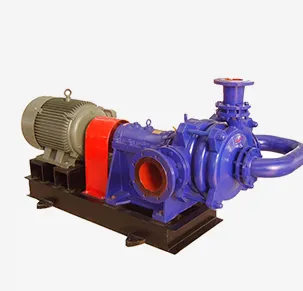Mongolian
- Afrikaans
- Albanian
- Amharic
- Arabic
- Armenian
- Azerbaijani
- Basque
- Belarusian
- Bengali
- Bosnian
- Bulgarian
- Catalan
- Cebuano
- Corsican
- Croatian
- Czech
- Danish
- Dutch
- English
- Esperanto
- Estonian
- Finnish
- French
- Frisian
- Galician
- Georgian
- German
- Greek
- Gujarati
- Haitian Creole
- hausa
- hawaiian
- Hebrew
- Hindi
- Miao
- Hungarian
- Icelandic
- igbo
- Indonesian
- irish
- Italian
- Japanese
- Javanese
- Kannada
- kazakh
- Khmer
- Rwandese
- Korean
- Kurdish
- Kyrgyz
- Lao
- Latin
- Latvian
- Lithuanian
- Luxembourgish
- Macedonian
- Malgashi
- Malay
- Malayalam
- Maltese
- Maori
- Marathi
- Mongolian
- Myanmar
- Nepali
- Norwegian
- Norwegian
- Occitan
- Pashto
- Persian
- Polish
- Portuguese
- Punjabi
- Romanian
- Russian
- Samoan
- Scottish Gaelic
- Serbian
- Sesotho
- Shona
- Sindhi
- Sinhala
- Slovak
- Slovenian
- Somali
- Spanish
- Sundanese
- Swahili
- Swedish
- Tagalog
- Tajik
- Tamil
- Tatar
- Telugu
- Thai
- Turkish
- Turkmen
- Ukrainian
- Urdu
- Uighur
- Uzbek
- Vietnamese
- Welsh
- Bantu
- Yiddish
- Yoruba
- Zulu
Telephone: +86 13120555503
Email: frank@cypump.com
11-р сар . 27, 2024 21:46 Back to list
Optimized Peristaltic Pump Design for Accurate Slurry Handling and Efficient Flow Controls
Efficient Peristaltic Pump for Handling Slurry with Precision
In various industrial applications, the transportation of slurry— a mixture of solid particles suspended in liquid— becomes a significant challenge. The need for an efficient, precise, and reliable pumping solution has led to the development of advanced peristaltic pump technology. This type of pump is particularly well-suited for handling slurries due to its unique operational principles and design features.
Understanding Peristaltic Pumps
Peristaltic pumps operate by creating a series of compressions and relaxations in a flexible tube. As the rotor turns, it compresses the tube, pushing the fluid inside toward the discharge end. When the rotor moves on, the tube returns to its original shape, creating a vacuum that allows more fluid to enter. This continuous process makes peristaltic pumps ideal for handling sensitive materials, including slurries, as they can gently move viscous and particulate-laden fluids without causing significant shear stress.
Advantages of Peristaltic Pumps for Slurry Applications
1. Gentle Handling of Suspended Solids One of the primary advantages of peristaltic pumps is their ability to handle slurry with integrity. Unlike centrifugal pumps, which can chop and shear solid particles, peristaltic pumps move the slurry smoothly, maintaining the integrity of the solid components. This is crucial in applications where particle shape and size are important.
2. Self-Priming Capability Peristaltic pumps are self-priming, meaning they can draw liquid from a lower level without needing additional assistance. This feature is advantageous in many slurry applications, where materials may be sourced from various elevations.
3. Non-Contaminating Operation The design of a peristaltic pump allows for minimal contact between the pumped fluid and mechanical parts. The fluid only contacts the inner wall of the tubing, preventing contamination. This characteristic is vital in industries like pharmaceuticals, food, and wastewater treatment, where maintaining purity is essential.
4. Versatility and Precision Peristaltic pumps can handle a wide range of viscosities and are capable of metering fluids accurately. This precision is crucial for applications requiring specific dosing, such as chemical processing or the treatment of mineral slurries.
efficient peristaltic pump for handling slurry with precision ...

5. Easy Maintenance Maintenance of peristaltic pumps is relatively straightforward. The primary wear component—the tubing—can be quickly replaced without specialized skills. This ease of maintenance results in reduced downtime and operational costs.
Applications in Industry
The versatility of peristaltic pumps allows them to be deployed in various sectors. In the mining industry, for example, peristaltic pumps are utilized to transport slurry from ore processing to tailings disposal. Their ability to handle abrasive materials continuously and precisely makes them ideal for such demanding environments.
In chemical processing, these pumps are employed to move corrosive slurries, allowing manufacturers to use materials that would be incompatible with other pump types. Additionally, in food processing, they transfer pastes and slurries, ensuring product quality and hygiene.
Future Innovations
As technology continues to evolve, so too will the designs and functionalities of peristaltic pumps. Manufacturers are exploring the integration of smart technologies, such as IoT connectivity and predictive maintenance systems, to enhance the operational efficiency of these pumps. Such innovations can provide real-time data on performance metrics, enabling predictive adjustments that optimize slurry handling.
Furthermore, advancements in tubing materials can enhance the durability and performance of peristaltic pumps in abrasive or chemically aggressive environments. This focus on innovation will ensure that peristaltic pumps remain a preferred option for businesses requiring reliable and precise slurry handling solutions.
Conclusion
Efficient peristaltic pumps have emerged as a critical component in the handling of slurries across various industries. Their ability to manage viscous mixtures delicately and with precision positions them as indispensable tools in today’s industrial landscape. As innovation continues to shape their development, peristaltic pumps will likely see even wider applications and improved functionalities, reinforcing their role in efficient slurry management.
-
Custom Drilling Mud and Slurry Pump Supplier - High Efficiency, Tailored Solutions
NewsJun.10,2025
-
Supply Vertical Submersible Sewage Pump High-Efficiency WQ/QW Pumps Supplier
NewsJun.10,2025
-
Premium Sewage Ejection System & Pumps Efficient Waste Removal
NewsJun.09,2025
-
Premium Wholesale Slurry Pump Impellers Durable & Efficient Slurry Handling
NewsJun.09,2025
-
Top Sewage Pump Companies Durable Industrial Solutions for Efficiency
NewsJun.09,2025
-
Heavy Duty Slurry Pumps - OEM High Performance & Bulk Wholesale
NewsJun.09,2025










